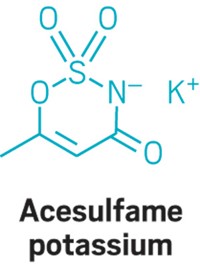Advertisement
Grab your lab coat. Let's get started
Welcome!
Welcome!
Create an account below to get 6 C&EN articles per month, receive newsletters and more - all free.
It seems this is your first time logging in online. Please enter the following information to continue.
As an ACS member you automatically get access to this site. All we need is few more details to create your reading experience.
Not you? Sign in with a different account.
Not you? Sign in with a different account.
ERROR 1
ERROR 1
ERROR 2
ERROR 2
ERROR 2
ERROR 2
ERROR 2
Password and Confirm password must match.
If you have an ACS member number, please enter it here so we can link this account to your membership. (optional)
ERROR 2
ACS values your privacy. By submitting your information, you are gaining access to C&EN and subscribing to our weekly newsletter. We use the information you provide to make your reading experience better, and we will never sell your data to third party members.
Environment
Newscripts
Fresher Urinals, Cancer-sniffing Dog
by Jeff Huber
May 9, 2011
| A version of this story appeared in
Volume 89, Issue 19

It’s hard to walk into a public restroom today without being greeted by a wide variety of automatic, “no touch” devices—for instance, motion-activated faucets and electric hand dryers—that are meant to inhibit the spread of germs. WATERLESS URINALS are the latest addition to this family of environmentally friendly gizmos, and they are quickly becoming a fixture among bathroom fixtures.
By all appearances, waterless urinals, such as those manufactured by Falcon Waterfree Technologies, resemble traditional urinals, except that they lack a lever for flushing. Instead, Falcon Chief Executive Officer James Krug explains, the devices rely on gravity and their architecture to channel urine into a cartridge located at their base. Once inside the cartridge, urine passes through a liquid sealant composed in part of a long-chain fatty acid and antibacterial terpenoids. The sealant’s specific gravity of 0.97 ensures that it floats to the top of the cartridge and locks in odor, while urine, which has a slightly higher specific gravity, moves downward and makes its way to the drain.
According to Krug, waterless urinals have many advantages over traditional ones, especially when it comes to sanitation. “There is a misconception that water is actually cleaning the environment” of urinals, Krug tells Newscripts. In reality, he says, water from flushing promotes the growth of bacteria as well as the creation of unpleasant odors. “The smell that we associate with urine is ammonia gas, and you get ammonia gas when you mix water with urine,” he explains.
Furthermore, waterless urinals help owners avoid the environmental and labor costs associated with traditional urinals, which typically produce 40,000 gal of contaminated water each year, Krug says. Waterless urinals require only routine cleaning and replacement of their cartridges—units made of recyclable plastic and the biodegradable liquid sealant—three to four times per year. Krug estimates that features such as these provide waterless urinal owners with annual savings of $200 to $500 per urinal.
For all these reasons, Krug is optimistic about the prospects of Falcon’s product. “We’re very bullish on the future,” he says. “It’s a product whose adoption is rapidly increasing, and over time I think we will see significant diminishing of flush valves in the market.”
Despite the apparent contradiction in terms, waterless urinals could very well be the wave of the future.
Although dogs frequently examine outdoor fixtures such as fire hydrants and trees (nature’s waterless urinals) the canines don’t often communicate their chemical findings to humans. Not so, however, for Marine, a black Labrador retriever that can sniff out COLORECTAL CANCER in feces.

Marine, a student of the St. Sugar Cancer Sniffing Dog Training Center, in Chiba, Japan, has been taught to use her sense of smell to identify stool samples, as well as breath samples, that belong to patients with colorectal cancer (Gut, DOI: 10.1136/gut.2010.218305). From late 2008 to mid-2009, Marine participated in a series of experiments in which she was presented with a stool or breath sample from a colorectal cancer patient. She was then asked to examine a lineup of five other samples—four belonging to healthy individuals and one belonging to an individual with colorectal cancer—before ultimately sitting in front of the sample she believed best matched the scent of the original.
All told, Marine was incredibly accurate, correctly identifying 91% of breath samples and 97% of stool samples. The researchers conducting the experiment believe the black Lab’s success is indicative of the existence of volatile organic compounds that are specifically associated with colorectal cancer. “We intend to evaluate these VOCs by chemical analysis,” they write. “Identification of cancer-specific VOCs will lead to solving the biological character of cancer.”





Join the conversation
Contact the reporter
Submit a Letter to the Editor for publication
Engage with us on Twitter